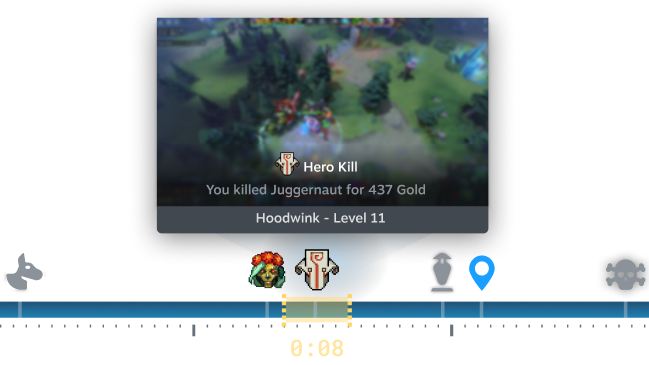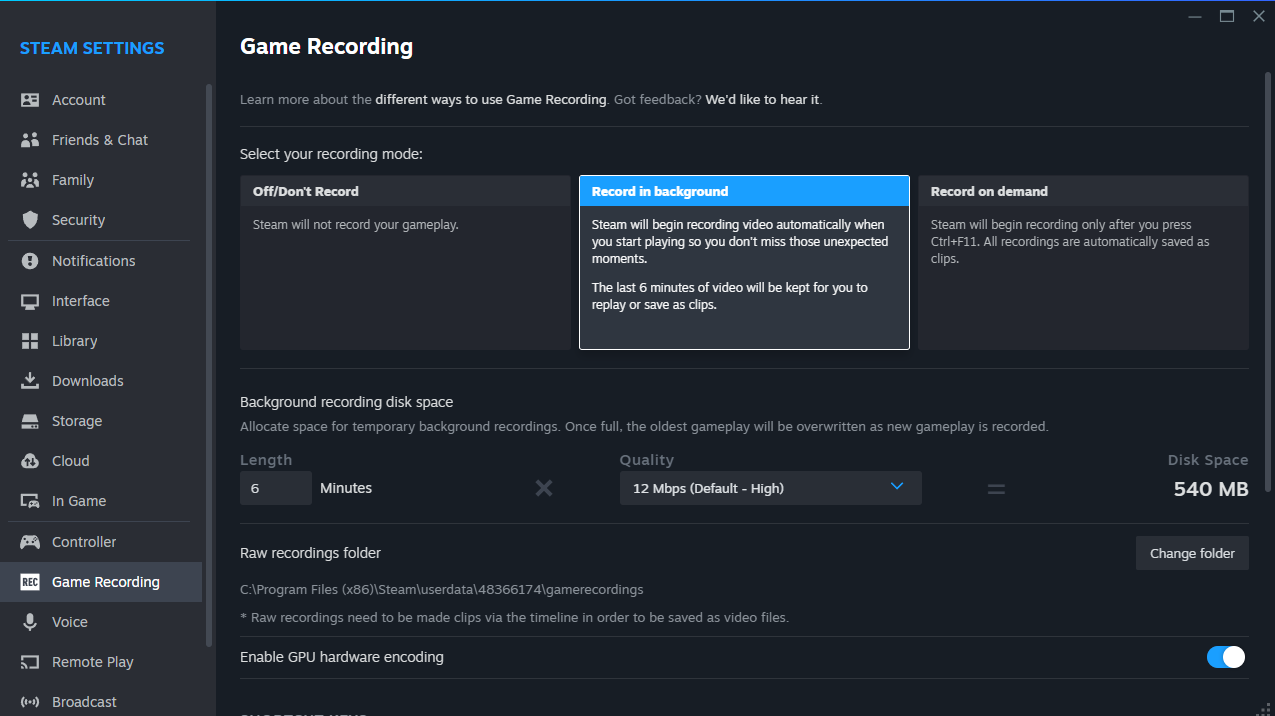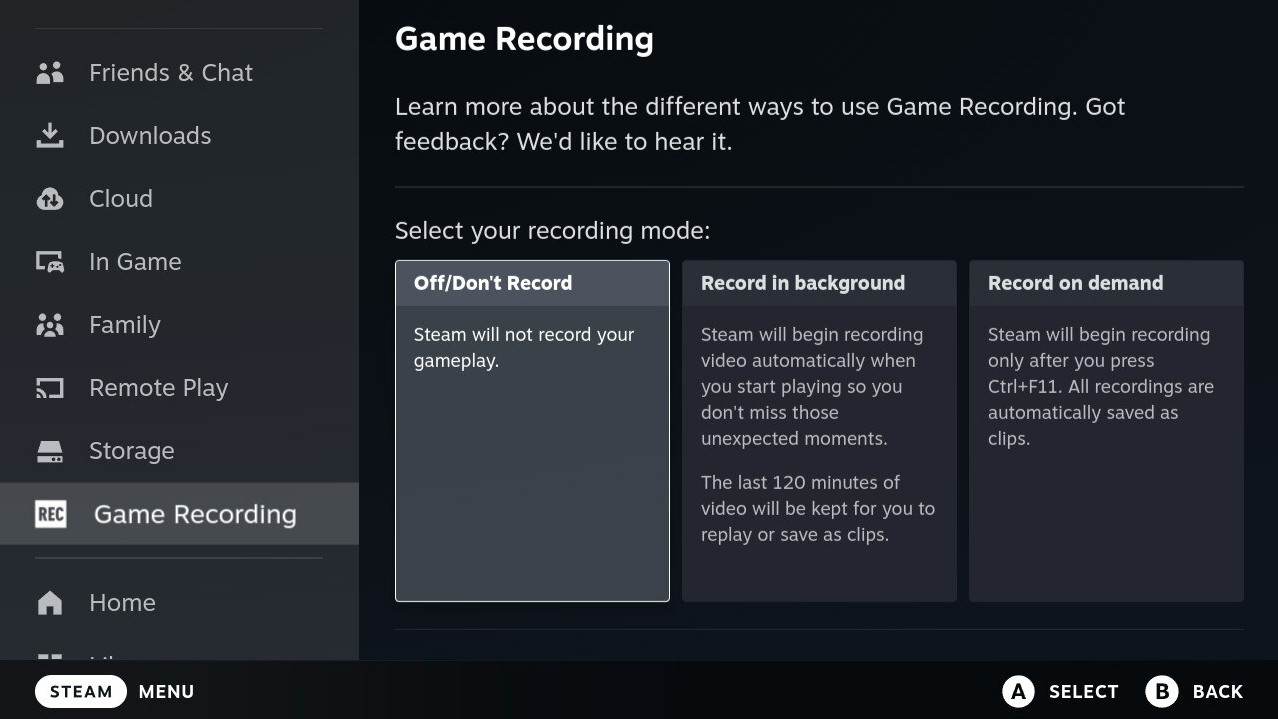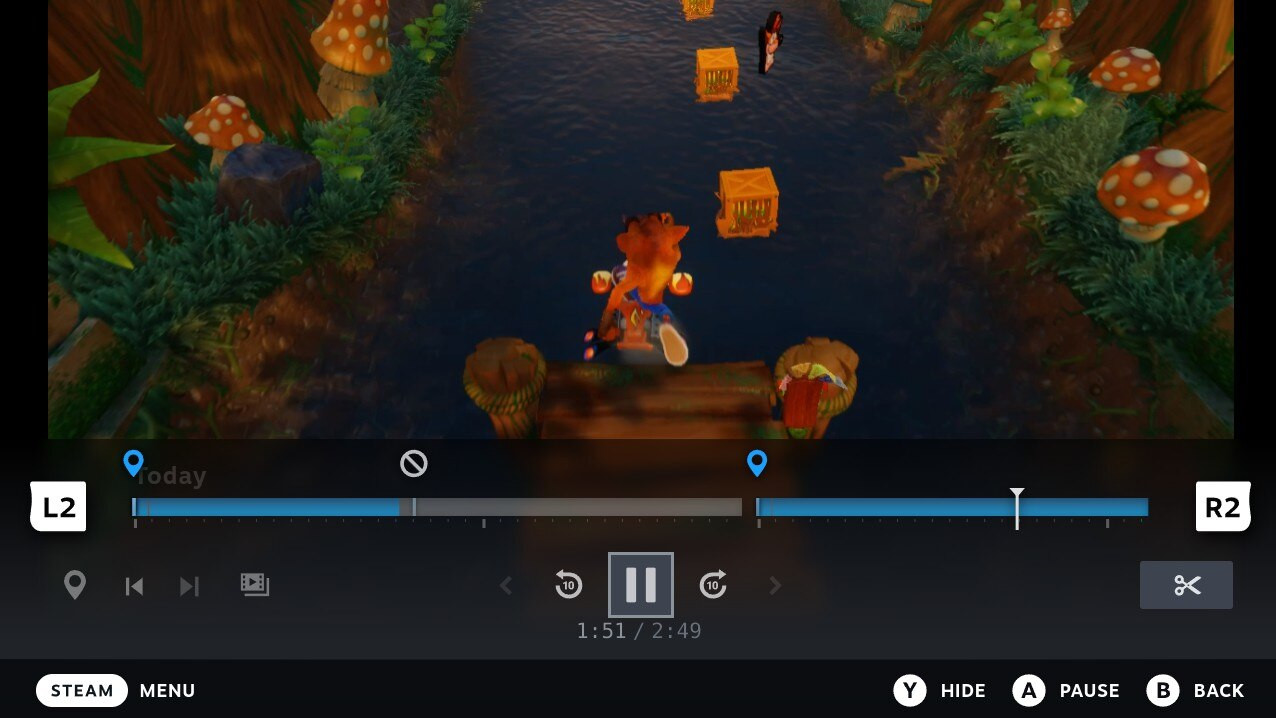Game Recording isthe latest featureto be added toValve’s Steam client, and while the solution is currently in beta, its features and Steam Deck compatibility make it seem quite promising. This is especially true compared to solutions like Nvidia Share and AMD ReLive, which also function as gameplay/desktop recorders using the built-in video encoders of modern GPUs. Let’s discuss this feature in more depth and what makes it stand out compared to existing solutions before showing you how to set it up.
The new Steam Game Recording feature functions in one of three modes: No Recording/Disabled, Background Recording/Enabled, and Manual Recording. The first and the latter are self-explanatory, but that Background Recording feature is where things get interesting. If you’ve used AMD ReLive or Nvidia Share (formerly Shadowplay), you’ll be familiar with this functionality as “Instant Replay,” which lets you set a time span/storage buffer for constantly recording gameplay but only saving the last X amount of time when you feel like it.

So, why use this new Steam Game Recording feature if you already have access to ReLive or Share on desktop? There are a few different reasons. For one, you shouldn’t lose much performance since Steam’s solution will also use your modern GPU’s built-in video encoder unless you disable it intentionally. More importantly, Steam’s Game Recording works seamlessly into the Steam Overlay and includes a snappy, easy-to-use clip editor that lets you cut and trim your actual clips far quicker than is possible with Share or ReLive.
In terms of features and overall usability, Steam Game Recording would already be better than Nvidia Share and ReLive based on that alone, with the caveat that those solutions also support streaming to Twitch and such, not just streaming/sharing to Steam servers or exporting as MP4. Another exceptional feature of Steam Game Recording is actually found in developer/API support, which allows developers to have key game events like loading screens, player deaths, and so on marked in the editing timeline.

The greatest caveat of Steam Game Recording is that it will only work with games that properly support the Steam Overlay or don’t break it with your favorite mods enabled. You’ll still need to fall back on one of the vendor recording options or good ‘ol OBS for those use cases.
Get Tom’s Hardware’s best news and in-depth reviews, straight to your inbox.

Christopher Harper has been a successful freelance tech writer specializing in PC hardware and gaming since 2015, and ghostwrote for various B2B clients in High School before that. Outside of work, Christopher is best known to friends and rivals as an active competitive player in various eSports (particularly fighting games and arena shooters) and a purveyor of music ranging from Jimi Hendrix to Killer Mike to the Sonic Adventure 2 soundtrack.


